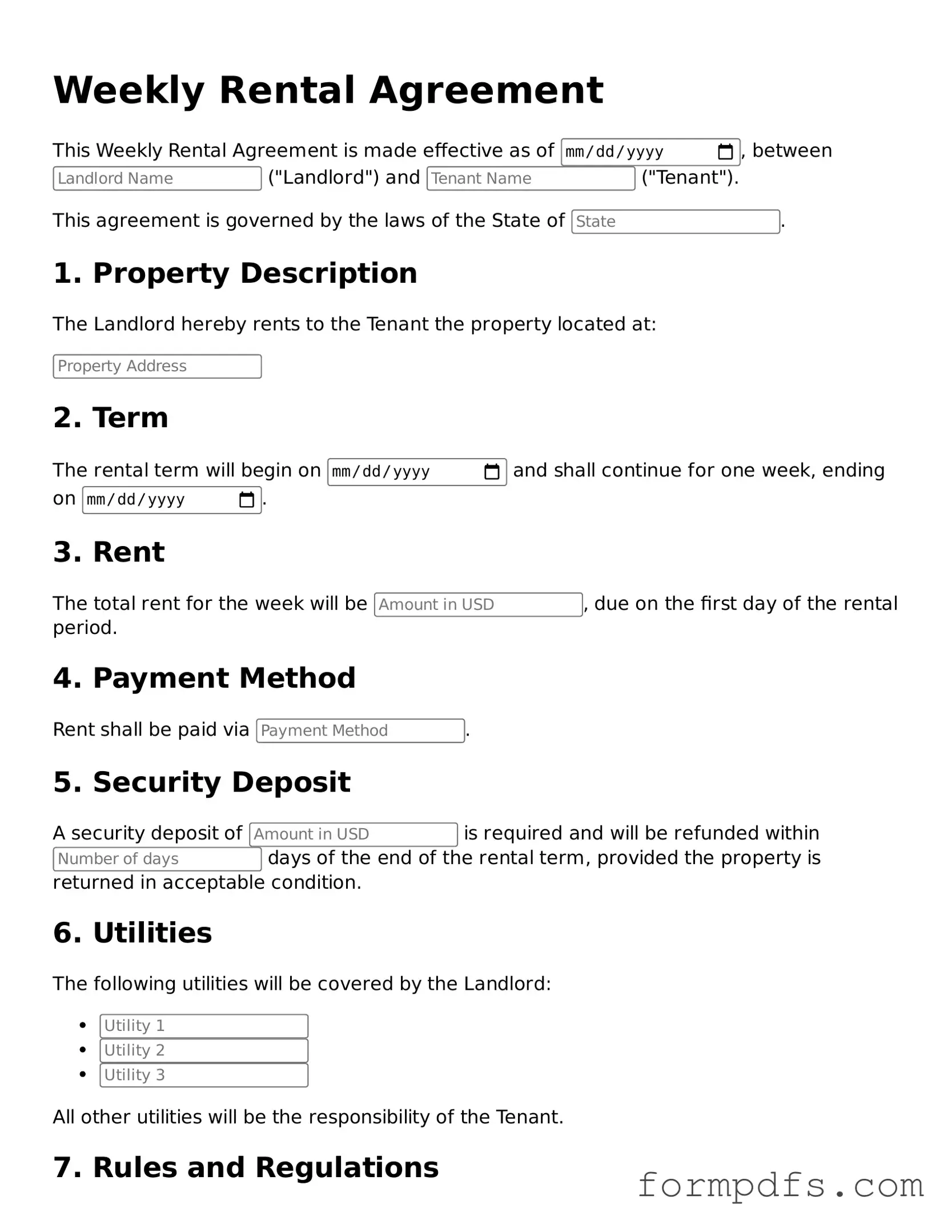Valid Weekly Rental Agreement Template
The Weekly Rental Agreement form is a crucial document used to outline the terms and conditions of a rental arrangement on a week-to-week basis. This form ensures that both landlords and tenants have a clear understanding of their rights and responsibilities. To get started, fill out the form by clicking the button below.
Open Weekly Rental Agreement Editor
